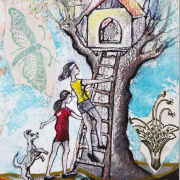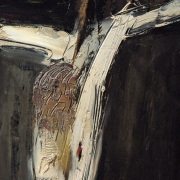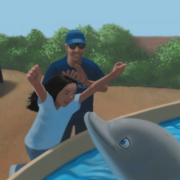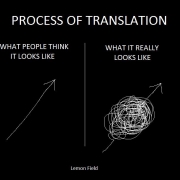Behind the Dolphin Smile. From Flipper To The Birth Of The Anti-Captivity Movement
“She committed suicide and it broke my heart. I use that word suicide with some trepidation, but I don’t know another word in the English language that describes self-induced asphyxiation.” The Samurai Dolphin Man, The Japan Times, Feb. 21st, 2017.
Richard O’Barry is well-known worldwide as the dolphin trainer in the famous TV show “Flipper“. However, after realizing that captivity was leading dolphins to commit suicide, he decided to turn his life around.
O’Barry has been fighting captivity for 50 years now, raising awareness among the public, rehabilitating and, whenever possible, releasing dolphins back to the sea. The Italian translation of one of his books (Dietro il sorriso dei delfini, 2012) offered Galactus a great opportunity to interview him.
Behind the Dolphin Smile (1989) is the autobiographical tale of a young dolphin hunter who would seize them from the open ocean to turn them over to the Miami Seaquarium.
When one of the dolphins playing Flipper died in his arms, O’Barry had a change of heart and promised the dolphins that he would devote the rest of his life to fight for their freedom. Behind the Dolphin Smile is the wonderful story of the genesis of the anti-captivity movement.
When was your interest for dolphins born originally? Not just saving them; when did you get interested in dolphins to start with?
I was about 3 feet tall, at Miami Beach, around 1943, or something. And I remember standing there in the sand, holding my mother’s hand, and we’re looking out right on the beach, in the surf, where there was a group of dolphins. And she was telling me stories of how dolphins saved the lives of humans through history.
And I had never heard of another wild animal coming out of the jungle to save the life of a human. So that caught my interest. I thought that was special. That’s a special thing, the dolphins saving the lives of humans. That is communication.
Your interest to protect the dolphins, how was that born?
With the death of Flipper. “Yes, we were very close, my dolphins and I, and when something went wrong, I took it very personally. Years later, when Kathy died in my arms, something of myself died, too.”
What was the purpose of Behind the Dolphin Smile when you wrote it?
As I explain in Behind the Dolphin Smile, after I went to Bimini to make up for what I had done to the dolphins, I was arrested, spent time in the Bimini Jail, and the news was all over the papers.
When my son Lincoln was in junior high school, in the house he found the original copy of the Miami Herald, and the headlines read:
“TRAINER OF FLIPPER IN FLAP CAN’T GET DOLPHIN TO FLEE”.
My book started out as a simple story intended for my son. I wanted him to understand what civil disobedience was, and that his father was not just a vandal who had been locked up in jail. Nothing more than the first chapter. When Keith Coulbourn edited this for me, he said, “You’ve got a book in you. You have a story to tell, let’s keep going with this”. The idea to write an entire book was more Keith’s than mine.
So, we kept writing and it became Behind the Dolphin Smile. It all started out with Keith doing my typing. I was going to a laundromat, where they have a little message center with little notes all over, people selling stuff, or somebody who’s a typist. So he was typing, cheap, and I was going over there to get some of my stuff typed up. Keith was a guy who retired as a journalist and taught writing at universities, and a book reviewer. And he said to me, “You’ve got a book in you.”
When Behind the Dolphin Smile came out, were you able to raise awareness?
Of course I did. That book launched a movement. Historically there was no movement before. There was no issue. Dolphin captivity was not an issue before Earth Day 1970, when I tried to free those dolphins. “That morning, in the spring of 1970, I flew into Bimini in the Bahamas to do something at last about the dolphins. Some people would say that it was foolish, a vainglorious gesture that would do no good and would soon be forgotten. For that reason, I told no one. Actually, I wasn’t clear myself about why I was doing it. The only thing I knew for sure was that I had to do something.
These were the days when bad laws were under siege, ordinary citizens challenging the law by breaking it and facing the consequences for the right to speak out against it.
The law I wanted to strike down was the one permitting the ownership of dolphins. I wanted people to realize that it was wrong to own dolphins, and even worse, if possible, to make them do those silly tricks. Owning dolphins is wrong because it goes against their nature. Dolphins are part of the sea and should remain there.”
So Behind the Dolphin Smile started the movement?
The book is tied into that, of course. Historically, before then, there was nobody there. The big groups didn’t even exist. There was no such thing as a Sea Shepherd, or Greenpeace, or nobody; nobody working on the captivity issue until 20 years later, probably.
So it took 20 years just to make it an issue. When the book came out, it was about the birth of an issue. And it was still a struggle. All the big groups that were working, they would laugh at it. Dolphin captivity? That’s not an issue. The big issue was the tuna / dolphin issue. That’s the only thing that people thought about when they heard about dolphins for many, many years.
But it became an issue, and now it’s a mainstream issue. So, for the purposes of your interview, it would be the book that started a movement.
The last question, Ric, why should people read this book?
It’s a good read. For that reason alone, it’s well written, and it’s a unique story. I used to get letters, when the book was out there, from people who said they read it in one sitting. They couldn’t put it down. And that’s really all Keith Coulburn. He’s a history writer. Those kind of writers can write anything.
But he needed a story, and your story is the best story that he could have told.
I don’t want people to read it thinking they’re going to read about all of these very difficult issues, like the Cove, and dolphins dying, and tuna nets. This book reads like a novel, and it’s a good read. It’s an entertaining read.
Looking back, I wish we had left the word dolphin out of the title. And I am trying to convince my wife to keep the word dolphin out of the title of her book, because when it ends up in bookstores, they pigeonhole you: “This belongs in the section of biology”. You couldn’t find this book when it was in bookstores, you’d have to go to the section about fish, the section about biology.
Behind the Dolphin Smile is written like a novel, and it’s literature. It’s not about all these issues. So that’s what I mean when I say, “Why should people read it? Because it’s a good read. And that’s really the reason. It’s not about all these hard issues.” And that really is an art. And that’s really all Keith Colburn being able to write about all this stuff without boring people with all those difficult issues.
My wife is struggling with it; trying to tell a story that flows without these stumbling blocks. You know, when you get into all these various characters, like in To Free a Dolphin, that has a lot of characters and these are stumbling blocks, and people have to stop the flow and figure out who’s who, and where they’re at.
Are you thinking of writing book number three?
I would love to. I think there is a story, because now we’ve created the first real dolphin sanctuary in Bali, and it’s growing.
How long is it going take to get that one ready?
Another month or so, they are building it right now, as we speak. And a month is around the corner. They work really fast. These guys can build anything, as long as they have the resources and the material, and we’re providing all that.
I only wish it was closer so I could actually drive there several times a year, and really enjoy it. But it is so far. It is so hard to get there. You have to get on boats, and small planes. It’s so far away, it’s so expensive, and it’s unfortunate because it’s a forever project, and we’ll be going there, back and forth. Thank goodness we have good staff and I don’t have to be there, they’re taking good care of those dolphins, they have been taking care of them for seven years. So yeah we got lucky there.
Well, we have to say that a lot of dolphins have been very lucky to run into Richard O’Barry. Galactus Translations thank you for this enlightening chat, Ric!
To learn more about Ric O’Barry’s Dolphin project go to: www.dolphinproject.com





 William Congdon Foundation
William Congdon Foundation




